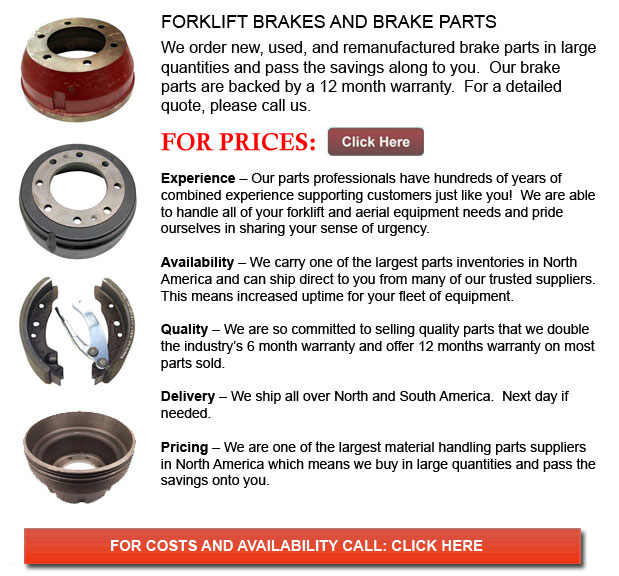
Forklift Brakes - A brake wherein the friction is provided by a set of brake pads or brake shoes that press against a rotating drum shaped unit called a brake drum. There are several specific differences among brake drum types. A "brake drum" is normally the definition provided when shoes press on the inner exterior of the drum. A "clasp brake" is the term used to describe when shoes press next to the exterior of the drum. Another type of brake, referred to as a "band brake" utilizes a flexible band or belt to wrap around the exterior of the drum. If the drum is pinched in between two shoes, it can be known as a "pinch brake drum." Like a standard disc brake, these kinds of brakes are quite uncommon.
Prior to nineteen ninety five, old brake drums required consistent modification regularly to be able to compensate for shoe and drum wear. "Low pedal" or long brake pedal travel is the dangerous outcome if adjustments are not carried out satisfactorily. The vehicle can become dangerous and the brakes could become ineffective when low pedal is combined along with brake fade.
There are quite a few different Self-Adjusting systems designed for braking existing these days. They can be classed into two individual categories, the RAD and RAI. RAI systems are built in systems that help the device recover from overheating. The most well known RAI manufacturers are Bendix, Lucas, Bosch and AP. The most well-known RAD systems consist of AP, Bendix, Ford recovery systems and Volkswagen, VAG.
The self adjusting brake would normally only engage if the vehicle is reversing into a stop. This method of stopping is satisfactory for use where all wheels use brake drums. Disc brakes are used on the front wheels of motor vehicles these days. By functioning only in reverse it is less probable that the brakes will be applied while hot and the brake drums are expanded. If tweaked while hot, "dragging brakes" can take place, which raises fuel consumption and accelerates wear. A ratchet mechanism which becomes engaged as the hand brake is set is one more way the self repositioning brakes could work. This means is only appropriate in functions where rear brake drums are used. Whenever the parking or emergency brake actuator lever goes beyond a certain amount of travel, the ratchet developments an adjuster screw and the brake shoes move toward the drum.
Placed at the bottom of the drum sits the manual adjustment knob. It could be tweaked making use of the hole on the opposite side of the wheel. You will have to go beneath the vehicle with a flathead screwdriver. It is extremely essential to be able to adjust each and every wheel equally and to be able to move the click wheel correctly in view of the fact that an uneven adjustment could pull the vehicle one side during heavy braking. The most effective method to make certain this tedious task is accomplished safely is to either lift each and every wheel off the ground and spin it by hand while measuring how much force it takes and feeling if the shoes are dragging, or give every\each and every one the same amount of manual clicks and then perform a road test.
![]() Click to Download the pdf
Click to Download the pdf
Forklift Parts
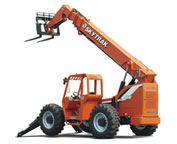


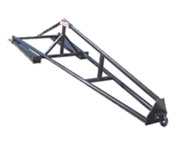
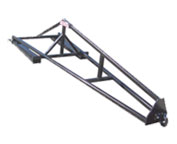

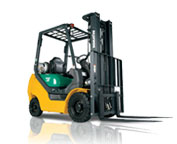
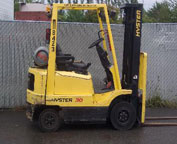
Lift Parts Express
TOLL FREE: 1-888-695-7994
LOCAL: 909-259-9336
1030 NORTH MOUNTAIN AVE 341
Ontario, California
forkliftpartsinontario.com
Email Us
About Us


